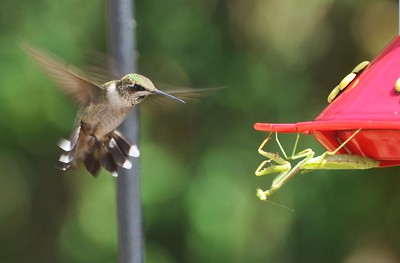Goodbye New York City
Goodbye New York!
I tell a friend I’m going to go and
live in New Mexico.
She says: The air out there is
desert baked.
It’s all in touch with water.
Water? I ask. What water?
The Rio Grande, the sand, the cactus.
The air in New York is recycled
she says: New York—There’s not a spot
on any sidewalk
that hasn’t been spit on, pissed on,
killed or died on.
By the way, I add, all these apartment
buildings are compacted with human lives.
(Conversation with Michelle White)
Coda:
“We get the sense of warehouses of strangers–of people stacked into the sky in lonely apartments, each one hiding secrets.” (this line from Roger Ebert’s 1998 review of the movie Happiness reminds me of the final line of my poem… “buildings are compacted with human lives.”)
6 Haiku
fired clay tablets
City of Ur breaking news
once upon a time
prayer in step and dance
drums in dust cloud trance
Pueblo feast
Summer sundown bright as noon
dog days dusk dawdles
night held at bay
nightfall sun bright as noon
East sky lights up
double sunset
jagged mountain range
background white clouds billow
and touch New Mex’co earth
hot springs bubbling up
thermal aquifers below
Jemez Mountain pools
(This poem is part of the permanent haiku fired clay tablet exhibit at Santa Fe Community College Quad)
Journal of the Plague

This plague—this leveler.
This people faded from sight.
This abandoned concourse.
This vacant city.
This alien abduction?
This law of distance, mask and lock-down.
This plodding day, and dusk, and night.
This desolate year,
ceremony, festival, and holiday, fled.
This empty time.
Inconceivable particles fall silently in void.
Preying mantis

Menacing forearms
dangling forth
in mock accommodation,
in artful care.
Mournful pleading,
wide-eyed stare—
peering,
mesmerizing.
Mournful pleading
wide-eyed stare—
peering–
dangerous
deliberation.
Praying they call you? To what?

An ant’s perspective
“The ground is cavernous with the burrows of lizards and crawling forms, with centipedes and fierce formicidae.”
Carmen Ariza by Charles Francis Stocking

Ants, who dream that Zeus had made them Myrmidons,
who dream of rageful Achill and honors gone.
Ants, a mob, a mass of them,
each no greater than grain of salt…
From my Olympian height
I see them in flagstone crevices
leading to Upaya Zendo.
Stepping over them, around them
as best I can,
from my Olympian height,
there seems no focal point for them,
only frantic aimlessness,
movement in all directions,
frenzied, panicked riot,
as if filmed at super high velocity
from my Olympian height,
as if in city forewarned of some impending doom.
Other ants, magnitude of rice,
segmented body, six spindly legs
attached to thorax,
claw at end of leg.
Head of jaws, and many lensed eyes.
Antennae that smell, touch, taste, and hear.
Those spindly legs—fitted with knees.
I wager, and I wonder if there might not be a God at last.
I mean, come on, tiny legs and tiny knees? ? ?
Bathed in early morning sunlight,
I observe them on concrete slabs of sidewalk
leading to my house.
They scurry to and fro—
quick, jerky ambulations.
From my Olympian height,
I see the tiny creatures dart and turn,
lit by early morning sunlight
casting shallow, irrational tiny shadows,
now in front,
then on right, then on left,
then gone abruptly as they stop, aligned with sunlight rays?
Are they confused, bamboozled
as they traverse de Chirico empty circuits?
(in reality only concrete slabs of sidewalk leading to my house
— flat, vast ambits— infinite as painted by de Chirico…)
To them, surreal expanses of portentous silence,
creating enigmatic visual poetry—to them…
————————————-
“Ants are eusocial insects of the family Formicidae and, along with the related wasps and bees, belong to the orderHymenoptera. Ants evolved from wasp-like ancestors in the Cretaceous period, about 140 million years ago, and diversified after the rise of flowering plants. More than 12,500 of an estimated total of 22,000 species have been classified. They are easily identified by their elbowed antennaeand the distinctive node-like structure that forms their slender waists.
“Ants form colonies that range in size from a few dozen predatory individuals living in small natural cavities to highly organised colonies that may occupy large territories and consist of millions of individuals. Larger colonies consist of various castes of sterile, wingless females, most of which are workers (ergates), as well as soldiers (dinergates) and other specialised groups. Nearly all ant colonies also have some fertile males called “drones” (aner) and one or more fertile females called “queens” (gynes). The colonies are described as superorganisms because the ants appear to operate as a unified entity, collectively working together to support the colony.
“Ants have colonised almost every landmass on Earth. The only places lacking indigenous ants are Antarctica and a few remote or inhospitable islands. Ants thrive in most ecosystems and may form 15–25% of the terrestrial animal biomass.” SOURCE: Ant, Wikipedia
“Eusociality (from Greek εὖ eu “good” and social), the highest level of organization of animal sociality, is defined by the following characteristics: cooperative brood care (including care of offspring from other individuals), overlapping generations within a colony of adults, and a division of labor into reproductive and non-reproductive groups. The division of labor creates specialized behavioral groups within an animal society which are sometimes called castes. Eusociality is distinguished from all other social systems because individuals of at least one caste usually lose the ability to perform at least one behavior characteristic of individuals in another caste.” SOURCE: Eusociality, Wikipedia
FINIS
First published in My View, Santa Fe New Mexican, March 10 2019
Sarcophagus

